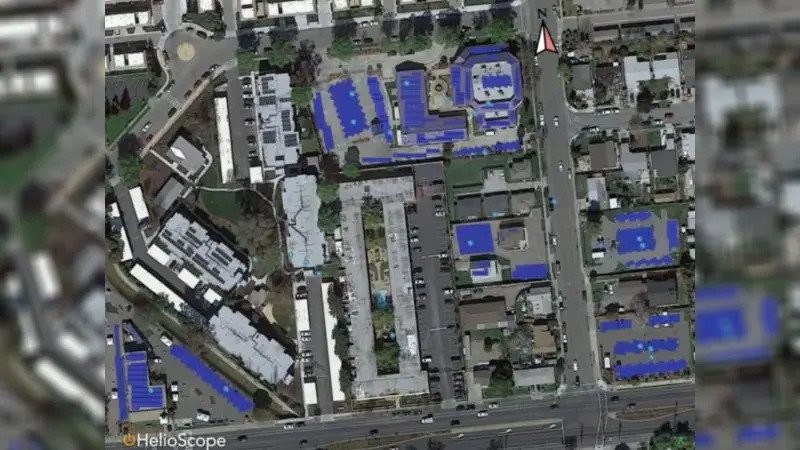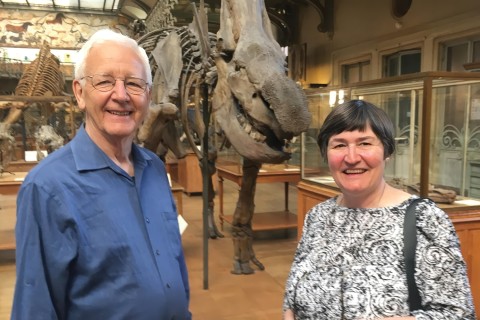Can money-making microgrids empower Black churches to close the clean energy gap?

Tentative placement of solar panels on Glad Tidings Campus. (screengrab)
Editor's note: This story is part of "Growing a Green Church," an ongoing series focused on churches' efforts to steward their buildings and land effectively in the context of a changing climate. The project is produced in collaboration with The Christian Century, Episcopal News Service, Faithfully Magazine, National Catholic Reporter, and Sojourners, with support from the Solutions Journalism Network and funding from the Fetzer Institute. Find more stories in the series here.
A Black church in California has set out to develop a microgrid that could generate up to $1 million annually. The project, spearheaded by Gemini Energy Solutions and Green The Church, is part of a larger effort to empower Black churches—and their communities—to join the clean energy movement.
Although transition to green energy has become more common, Black and Hispanic Americans, disproportionately impacted by environmental hazards, are still missing out on its benefits. A 2019 study published in Nature Sustainability found that Black communities are significantly absent from the rush to solar, even when factors like homeownership and income are accounted for. The racial disparity could be due to higher costs and a lack of access to financing.



